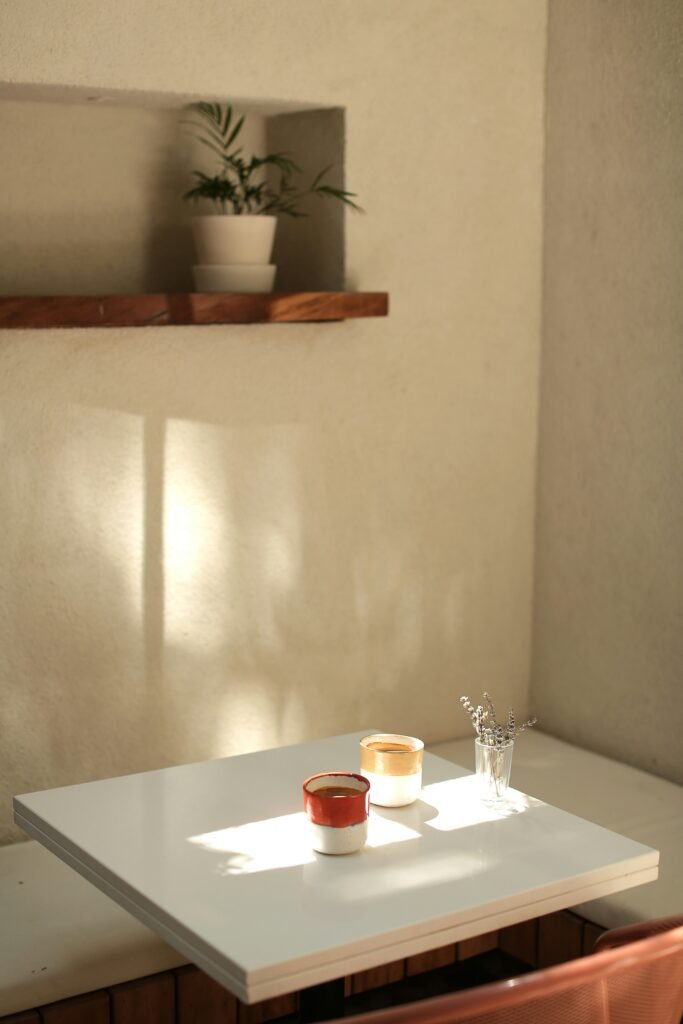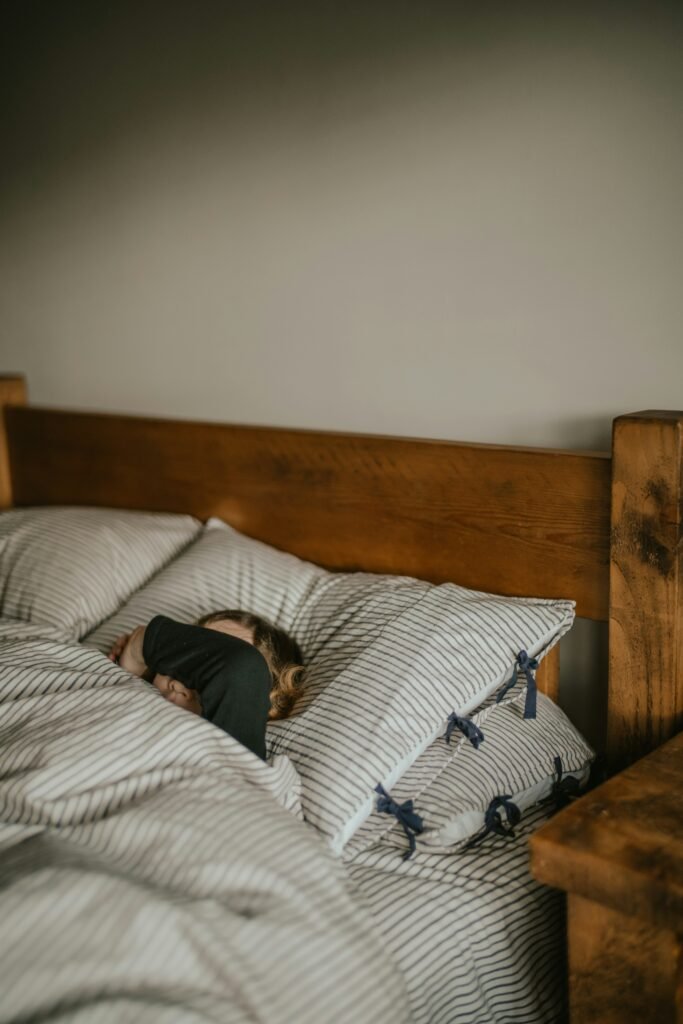What I Do Every Morning to Feel More Centered
My Journey From Chaotic Mornings to Calm Starts
For the longest time, my mornings were a disaster. I’d slam the snooze button until I couldn’t anymore, rush out of bed already feeling behind, and then frantically throw myself into the day—half-dressed, half-fed, and half-ready for whatever awaited me. That scattered energy followed me everywhere. I snapped more easily at people I cared about, felt anxious before even opening my laptop, and no matter how hard I worked, I felt like I was always two steps behind.
Three years ago, it all caught up with me. My body was exhausted, my sleep was trash, and my stress levels were through the roof. One Tuesday morning, after barking at my husband for something as silly as making too much noise with the coffee machine, I realized: this isn’t who I want to be. I didn’t want to start every day in survival mode.
That was my turning point. Slowly—very slowly—I started experimenting with my mornings. Not a big overhaul at once, but little things: getting out of bed a bit earlier, putting my phone aside for a few minutes, drinking water before coffee. What began as small adjustments has turned into a ritual that I honestly can’t imagine skipping now.
And let me be clear: it’s not about being perfect. Some mornings I check all the boxes of my routine. Other mornings, I barely manage one or two things before life takes over. But here’s what matters—I’ve stopped starting the day on autopilot. Instead, I begin with intention. And that has changed everything.

Why Mornings Matter More Than I Realized
I used to roll my eyes at people talking about “miracle mornings.” But here’s the truth I’ve learned: how you begin your day sets the tone for everything that follows.
When I used to wake up late, scrolling through emails while brushing my teeth, the whole day felt like a scramble. Now, with even 15 minutes of mindful routine, I feel calmer, more focused, and oddly more resilient when things don’t go as planned.
And it’s not just a feeling. Studies show that simple morning habits—like hydration, movement, or journaling—reduce stress hormones, improve focus, and even help with decision-making. I’ve lived that difference. On mornings when I skip my routine, I feel like “Grumpy Bear” (my husband’s old nickname for me). On mornings when I stick to even half of it, I’m… me, but better.
The Story of How My Routine Stuck
At first, my husband thought it was just another phase. He’d watch me sit cross-legged on the couch with my journal and smirk. But then, after a few weeks, he said something that floored me: “Morning-you is much nicer to be around.”
He was right. I wasn’t snapping at him, I wasn’t rushing the kids, and I wasn’t already stressed before leaving the house. It didn’t just change how I felt—it changed how our mornings as a family felt.
Now, we actually share parts of our routines. He makes his coffee and writes in a journal while I stretch or meditate. Sometimes our daughter joins in and colors next to me while I write. It’s not perfect or Instagram-worthy, but it’s ours—and it feels good.
What My Morning Ritual Looks Like
It’s not complicated. It usually takes me about 30–40 minutes, but it can be shortened to 10 if needed. Here’s the flow:
- Three deep breaths before I even leave bed. It sounds silly, but pausing before rushing into the day makes a huge difference.
- Hydration first, coffee second. A glass of water with lemon if I have it, plain water if not. It wakes me up better than caffeine.
- Gentle movement. Sometimes yoga stretches, sometimes just rolling my shoulders and touching my toes. Nothing fancy, just waking up my body.
- Meditation. Five to ten minutes max. I focus on my breath, or I use a guided app if my mind feels extra restless.
- Journaling. This is my non-negotiable. Gratitudes, a quick brain dump, or even just a single line: “Today I want to feel calm.”
- Breakfast or tea. Something simple, like oats or toast, but eaten mindfully instead of scarfed down while multitasking.
That’s it. No marathon workout. No rigid routine. Just a string of little practices that make me feel grounded before the world barges in.
Why It Actually Works
The magic is in the combination. Movement wakes my body, meditation calms my mind, journaling clears the mental clutter, and hydration plus food fuel me properly. Together, they create a balance that carries through the rest of the day.
And unlike those “optimize your morning for peak performance” routines, mine isn’t about doing more—it’s about being more present. It’s not about crushing a to-do list but about showing up with clarity and calm. That’s what keeps me consistent.
What You Need to Try It
- A quiet corner (or headphones if your house is loud)
- A notebook and pen
- A comfy spot for sitting or stretching
- A glass of water
- Optional: a candle, meditation app, or yoga mat
That’s it. No need for expensive gear or an Instagram-worthy space.
Tips If You Want to Start
- Start tiny. Two minutes of journaling or three deep breaths. Don’t aim for the whole routine at once.
- Be flexible. Some days you’ll do it all, some days you won’t. Progress, not perfection.
- Protect your time. Wake up 10–15 minutes earlier and treat this time like an appointment with yourself.
- Include your family if you need to. Kids can color or stretch with you. It’s messy but still meaningful.
Variations I Use
- If I can’t meditate, I do “box breathing” (inhale 4, hold 4, exhale 4, hold 4). It’s quick and calming.
- When I travel, I cut it down to journaling and stretching in my hotel room.
- On super chaotic mornings, even just the glass of water + three breaths makes me feel better.
The Healthier Version
If you’re prone to anxiety (like me), focus your journaling on gratitude or intentions instead of to-do lists. If you struggle with sleep, keeping your phone out of reach until after the routine can work wonders. And if movement feels overwhelming, even seated stretches or walking barefoot outside for a minute can connect you back to yourself.
Closing Thoughts
Finding center every morning isn’t about being perfect—it’s about showing up for yourself, even in small ways. My ritual doesn’t make my life stress-free, but it gives me a compass to come back to when things feel chaotic.
And honestly? It’s not just about me anymore. It’s about creating calmer mornings for my family, about showing my daughter that caring for yourself isn’t selfish, and about reminding myself daily that peace is something we can choose—even before coffee.
So tomorrow morning, before you grab your phone or rush into the day, try pausing. Take three breaths. Drink some water. Write one sentence. See how it feels. It might just be the start of your own ritual.

Frequently Asked Questions For Morning Centering Rituals
How long should my morning routine take?
Start with 15-20 minutes and adjust based on your schedule. Quality matters more than quantity.
What if I miss a day?
Simply begin again the next day. Consistency builds the habit, but perfectionism destroys it.
Can I do this routine if I have children?
Absolutely. Wake up before them or incorporate age-appropriate versions they can do alongside you.
Is it better to exercise or meditate first?
Gentle movement followed by meditation often works best, as it helps settle the body before quieting the mind.
What if I can’t stop thinking during meditation?
That’s completely normal. Meditation isn’t about stopping thoughts but noticing them without attachment.
Can I check my phone between activities?
Ideally, complete your entire routine before engaging with technology to maintain the centered state.
Will this routine help with anxiety?
Many people report reduced anxiety when practicing consistent morning rituals that include mindfulness.
Do I need to do this every single day?
Aim for 5-6 days per week. Consistency builds neural pathways that make centering easier over time.
Can I listen to music or podcasts during this routine?
Try to minimize inputs that pull your attention outward. Soft instrumental music is fine if it helps you focus.
How long until I feel the benefits?
Most people notice immediate daily benefits and more substantial changes after 2-3 weeks of consistent practice.
Is it okay to drink coffee during this routine?
Yes, but try to be mindful while preparing and consuming it, making it part of the ritual rather than just fuel.
What’s the most important element if I’m short on time?
If you can only do one thing, combine three deep breaths with setting an intention for the day. This takes under a minute but can shift your entire perspective.

